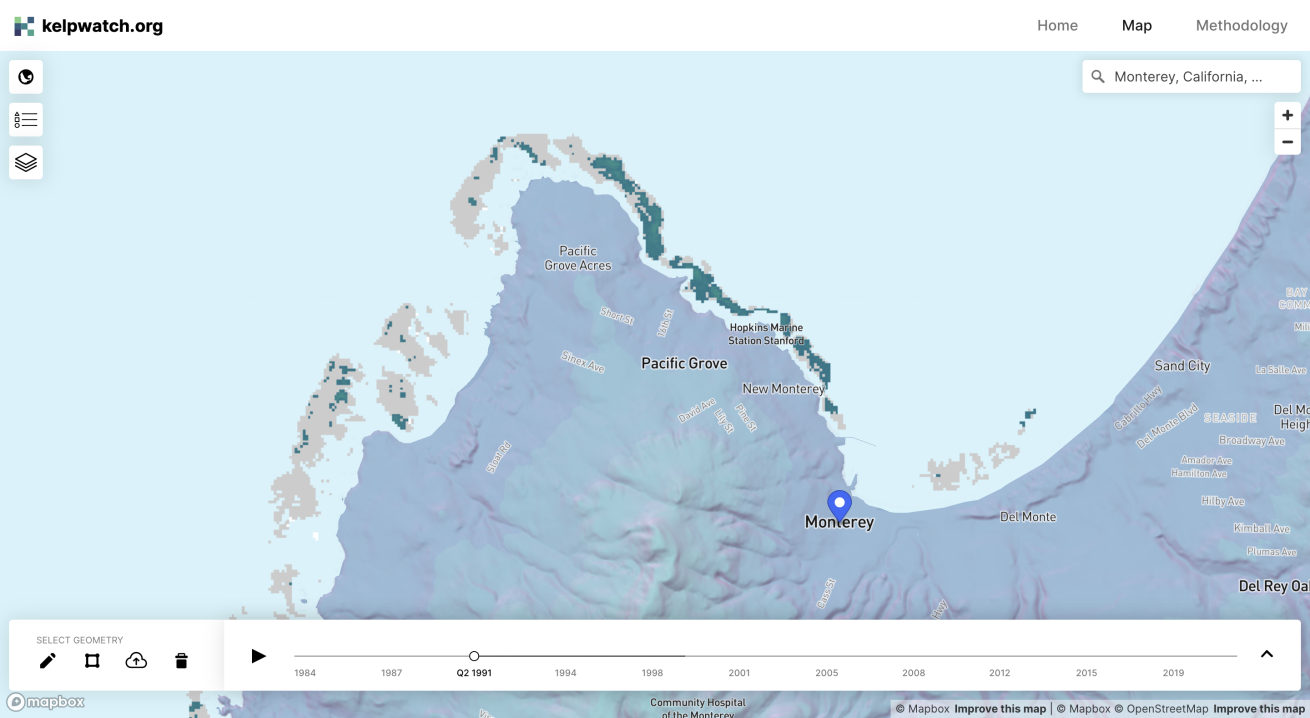World’s Largest Kelp Map Launches to Guide Restoration Efforts

PADI StaffA screenshot of Kelpwatch.org visualizes kelp forest density off the coast of Monterey, California in 1991.
The world’s largest kelp map is here, providing critical information to those tending to this struggling ecosystem.
Kelp is a large brown alga that lives in cool, relatively shallow nearshore waters. It grows in dense thickets, like trees in a forest, providing food and shelter for thousands of marine species. These underwater forests sequester carbon dioxide, protect coastlines from storms and are an ingredient in consumer products like foods and cosmetics.
Warming oceans are stressing this critical ecosystem. A climate-driven marine heatwave led to the death of 95 percent California’s north coast kelp between 2014 and 2017. Local fishing communities were devastated.
The dense canopies of kelp forests can be seen in satellite images. Scientists created the kelp map using Landsat satellite images from the last four decades and computers trained to recognize kelp canopies similar to how they recognize trees. Comparison of imagery from the same places over time helps ecosystem managers and restoration practitioners visualize fluctuations in kelp forest size. Paired with other oceanic and climate data, the new images can connect specific events with witnessed increases or decreases in kelp forest health.
This could be a game-changer because “...people charged with managing, protecting and restoring these ecosystems are often paralyzed by a lack of data and the scale of the problem,” Vienna Saccomanno, heads of the Nature Conservancy’s kelp mapping and monitoring program, tells Bloomberg.
The mapping tool can be found at Kelpwatch.org. It is a collaboration between the Nature Conservancy, the University of California at Los Angeles, the University of California at Santa Barbara and Woods Hole Oceanographic Institution.
“There’s been continuous Landsat coverage of the planet since the early ’80s, and that is just incredibly valuable when you’re trying to look at long-term changes in a marine ecosystem that changes really rapidly,” UCLA’s Kyle Cavanaugh tells Bloomberg. “That will help identify where kelp might be especially threatened by climate change or other stressors, as well as identifying areas that are more resilient to climate shocks.”
There are plans to expand Kelpwatch to Australia, Chile and other areas of the world with threatened kelp forests.










